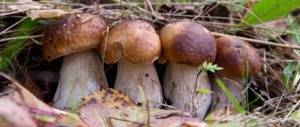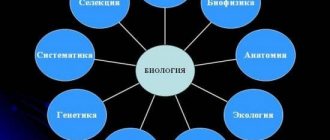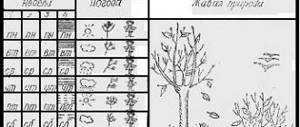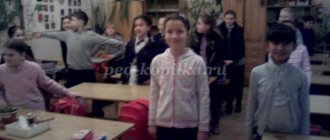Option 1
A1. The process of historical development of living nature from the appearance of life on Earth to the present day is
1) natural selection 2) evolution 3) struggle for existence 4) interspecific struggle
A2. Cytological evidence of evolution is
1) unity of structural plans of organisms within types 2) similarity of embryos within the type Chordata 3) similarity of the structure and chemical composition of cells of all organisms 4) presence of rudiments - remnants of previously existing organs
A3. The presence of rudiments and atavisms is proof of evolution
1) comparative anatomical 2) paleontological 3) embryological 4) biogeographical
A4. Findings of fossil plant imprints provide evidence of evolution
1) biochemical 2) from the field of systematics 3) comparative anatomical 4) paleontological
A5. The evolutionary process within unrelated systematic groups under the same conditions, leading to the acquisition of similar characteristics, is called
1) convergence 2) rudiment 3) divergence 4) atavism
A6. The similarity of body shapes between sharks, ichthyosaurs and dolphins is an example of evolution
1) phyletic 2) divergent 3) parallel 4) convergent
A7. Organs that develop from different embryonic primordia and are adapted as a result of convergence to perform the same functions are called
1) atavisms 2) homologous organs 3) rudiments 4) similar organs
A8. The emergence of several species of Galapagos finches from one common ancestor is an example of evolution:
1) phyletic 2) divergent 3) parallel 4) convergent
IN 1. Choose three correct answers .
Evidence for evolution is called evidence
1) the common origin of all organisms from common ancestors 2) individual development 3) variability of species 4) changes in environmental conditions 5) the emergence of some species from others 6) changes in the number of living organisms
AT 2. Choose three correct answers .
Examples of similar bodies are
1) human hand and butterfly wing 2) hawthorn spines and barberry spines 3) sundew leaves and barberry spines 4) butterfly wing and bird wing 5) bud scales and pea tendrils 6) pea tendrils and grape tendrils
Test on the topic “Evidence of Evolution”
Independent work on the topic “Evidence of Evolution”
Option 1.
In tasks 1-10, choose one correct answer.
1.What group of evidence for evolution consists of the finds of skeletons of ancient lobe-finned fish?
1) embryological 2) paleontological
3) biogeographical 4) comparative anatomical
2.Which of these judgments illustrate embryological evidence of evolution?
1) the number of cubs in the litter 2) features of organ development in ontogenesis
3) onset of puberty 4) manifestation of combinative variability
3.What evidence of evolution includes the presence of rudiments in animals?
1) biochemical 2) embryological 3) genetic 4) comparative anatomical
4.What should be considered atavism in humans?
1) third eyelid 2) spine 3) mammary glands 4) multiple nipples
5. The forelimbs of a seal and a bat are:
1) similar organs 2) homologous organs
3) vestigial organs 4) atavistic organs
6. The similarity of human embryos and vertebrate animals at different stages of their development serves as evidence of evolution:
1) biochemical 2) embryological 3) genetic 4) comparative anatomical
7.What sign in a person should be considered a rudiment?
1) grasping reflex 2) six-fingered limb
3) the presence of an appendix 4) abundant hair
8. What do the finds of fossils and plant imprints in the ancient layers of the Earth indicate?
1) about the individual development of plants 2) about seasonal changes in the life of plants
3) about the evolution of the plant world 4) about the features of plant photosynthesis
9. A pig's nickel and an elephant's trunk are:
1) homologues 2) analogues 3.atavisms 4.rudiments
10. Organs that are well developed in a number of vertebrates and do not function in humans -
1) adaptive 2) modified 3) rudimentary 4) atavistic
11. Establish a correspondence between the sign of evidence of evolution and its type.
SIGN VIEW
A) development of an organism from a fertilized egg 1) embryological
B) fossil remains of extinct organisms 2) paleontological
C) similarities between the embryos of vertebrates
D) fossil remains of transitional forms
D) the sequence of organ formation in ontogenesis
Independent work on the topic “Evidence of Evolution”
Option 2.
In tasks 1-10, choose one correct answer.
1.fossil remains and imprints of ancient plants and animals - an example of evidence of evolution:
1) embryological 2) paleontological 3) biogeographical 4) morphological
2. What sign is considered atavism in a person?
1) grasping reflex 2) six-fingered limb
3) the presence of an appendix 4) abundant hair
3.Which of the following examples illustrates the evidence for evolution?
1) the presence of transitional forms in the development of the organic world
2)acclimatization of plants and animals
3) seasonal changes in plant life
4) the adaptability of fish to life at different depths
4.Whale pelvic bones are:
1) rudiments 2) similar organs 3) atavisms 4) homologous organs
6. Similar bodies are:
1) a human hand and a bat wing 2) a walrus flipper and a seal flipper
3) fly wing and bird wing 4) butterfly wing and beetle wing
7. What embryological evidence of evolution suggests that humans are related to ancient mammals?
1) the similarity of fossil remains of animals and humans 2) the presence of continuous hair
3) formation of gill slits in the embryo 4) alternation of sexual and asexual generations
8. Paleontological evidence of the evolution of the organic world includes the presence of:
1) transitional forms 2) rudiments and atavisms
3) similar stages of embryonic development 4) homologous organs
9. Pea tendrils and cactus spines are an example:
1) rudiments 2) atavisms 3) homologues 4) analogues
10. Organs that have the same origin but perform different functions are called:
1) rudimentary 2) atavistic 3) homologous 4) analogous.
11. Establish a correspondence between the sign of evidence of evolution and its type.
SIGN VIEW
A) dinosaur remains 1) paleontological
B) the presence of the coccyx in the human skeleton 2) comparative anatomical
C) bird feather and lizard scales
D) prints of Archeopteryx
D) multiple nipples in humans
Independent work on the topic “Evidence of Evolution”
Option 3.
In tasks 1-10, choose one correct answer.
1. The similarity of human embryos and vertebrate animals at different stages of their development serves as evidence of evolution:
1) biochemical 2) embryological 3) genetic 4) comparative anatomical
2. What evidence of evolution includes the presence of rudiments in animals?
1) biochemical 2) embryological 3) genetic 4) comparative anatomical
3. The forelimbs of a seal and a bat are:
1) similar organs 2) homologous organs
3) vestigial organs 4) atavistic organs
4. The pelvic bones of a whale are:
1) rudiments 2) similar organs 3) atavisms 4) homologous organs
5. Paleontological evidence of the evolution of the organic world includes the presence of:
1) transitional forms 2) rudiments and atavisms
3) similar stages of embryonic development 4) homologous organs
6. Organs that have the same origin but perform different functions are called:
1) rudimentary 2) atavistic 3) homologous 4) analogous.
7. Which of the following examples illustrates the evidence for evolution?
1) the presence of transitional forms in the development of the organic world
2)acclimatization of plants and animals
3) seasonal changes in plant life
4) the adaptability of fish to life at different depths
8. A pig's nickel and an elephant's trunk are:
1) homologues 2) analogues 3) atavisms 4.rudiments
9. What group of evidence for evolution consists of the finds of skeletons of ancient lobe-finned fish?
1) embryological 2) paleontological
3) biogeographical 4) comparative anatomical
10. What do the finds of fossils and animal prints in the ancient strata of the Earth indicate?
1) about the individual development of animals 2) about seasonal changes in the lives of animals
3) about the evolution of the animal world 4) about the characteristics of animal life
11. Establish a correspondence between an example of evidence of evolution and its type.
SIGN TYPE of evidence
A) phylogenetic series of the horse 1) paleontological
B) the presence of pelvic bones in a whale 2) comparative anatomical
B) bird feather and lizard scales
D) prints of Archeopteryx
D) multiple nipples in monkeys
Test "Directions of Evolution"
19.Find errors in the given text. Indicate the numbers of the sentences in which errors were made and correct them.
1. Aromorphosis is a direction of evolution characterized by minor adaptive changes. 2. As a result of aromorphosis, new species are formed within the same group. 3. Thanks to evolutionary changes, organisms master new habitats. 4. As a result of aromorphosis, animals came to land. 5. Aromorphoses also include the formation of adaptations to life on the bottom of the sea in flounder and stingray. 6. They have a flattened body shape and are colored to match the color of the soil.
20. Read the text. Select three sentences that describe general degeneration.
(1) Simplification of the organization and lifestyle of organisms, accompanied by the loss of a number of organs or organ systems, is one of the ways to achieve biological progress. (2) Helminths switched to a parasitic lifestyle, greatly simplifying their organization. (3)They are distinguished by high fertility, complex development cycles and diverse adaptations to the environment. (4) In the process of evolution, the parasitic dodder plant lost the ability to photosynthesis due to the lack of normal leaves and roots. (5) In snakes there was a reduction in the limbs, and in the mole there was a reduction in the organs of vision. (6) Organ reduction is associated with mutations that are fixed over generations and spread throughout the population.
21.Read the text. Choose three sentences that describe idiomatic adaptations.
(1) The most numerous class of invertebrate animals is Insects. (2) In the process of evolution, they acquired particular adaptations to various living conditions without changing their level of organization. (3) Insects have various types of coloring, different body shapes and limbs. (4) The appearance of chitinous cover and a well-developed nervous system and sensory organs helped insects to spread widely on Earth. (5) A variety of oral apparatus contributed to their establishment in various ecological niches, depending on their food specialization. (6) The development of the tracheal system provides oxygen to the atmosphere.
22.Read the text. Choose three sentences that describe idiomatic adaptations. Write down the numbers under which they are indicated in the table.
(1) In the process of evolution, mammals have undergone major, fundamentally new changes in the structure of the body, significantly increasing the general level of their organization. (2) A four-chambered heart and warm-bloodedness, well-developed parts of the brain allowed mammals, like birds, to settle throughout the globe. (3) Pinnipeds have developed limbs modified into flippers; the nasal openings open only when inhaling and exhaling. (4) The alveolar lungs of mammals help enrich the blood with oxygen and produce large amounts of energy necessary for an active life. (5) Sometimes in the process of evolution an extreme degree of adaptation of an organism to very limited living conditions may appear - specialization. (6) For example, the marsupial koala feeds only on the leaves of several types of eucalyptus trees




